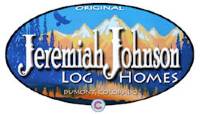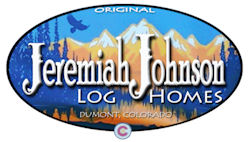If you’re thinking about building a custom, log home, you probably have a lot of questions. With three generations (spanning 118 years) of custom, log home building experience, Jeremiah Johnson has answers.
How much does it cost to build a log home?
You’ll be pleased to know, log homes are often less expensive than conventional stick-frame homes. However, it all depends on your preferences, from the type of wood, the plot of land, design elements, and construction materials, which can be costly. Log homes are also known for their durability, better insulation, and upgraded finishes. As a result, the expense and value may vary depending on different factors such as the location and size of your lot. That being said, log homes have become quite popular, and we can work with different budgets to ensure that your dream of building a cozy, charming dwelling can be realized.Why should I purchase my log home from Jeremiah Johnson Log Homes?
As both a log home manufacturer and builder, we not only have the expertise, but also years of experience behind us. By emphasizing the beauty of the natural wood and using each piece in the area of the house that best suits it, we offer the most attractive and structurally sound product on the market today. The uniqueness of our logs and the artistry of our craftsmen are what we are most proud of.What is the difference between a Handcrafted Log Home and a Milled Log Home?
The logs in a handcrafted line are completely hand peeled and hand scribed to fit together. Each log is unique and the builder tries to incorporate logs into their homes with unique features such as burls. Milled logs are peeled by machine giving each log in the home a standardized look.How long does it take to build a log home?
Like any home construction project, it’s difficult to give a one-size-fits-all answer. The timeline for building a log home is dependent on a number of factors, including size, complexity, and location. However, it’s safe to assume that building a log home typically takes longer than a conventional stick-built home. One thing that sets it apart is the need to properly cure the logs before they can be used in construction. This can take anywhere from six months to a year, depending on the type of wood and humidity levels. Once you get started, expect to spend at least several months on construction, with larger and more complex homes taking significantly longer. However, with the right team of professionals and a solid plan in place, building your dream log home is well worth the wait.What is the process of building a log home?
Building a log home is a process steeped in tradition and craftsmanship. From selecting the right piece of land to laying the foundation and stacking logs, every step requires careful consideration and attention to detail. The process starts by choosing the right logs, which must be straight, free from knots and insect damage, and seasoned properly. After that, the foundation is laid, and the logs are stacked, carefully and precisely, to create the structure of the home. Chinking is applied between the logs to seal gaps and create a tight seal, and various finishes, such as stains and seals, are used to protect the wood and enhance its natural beauty. With each step, the builder must take care to ensure that the home will be safe, durable, and aesthetically pleasing for generations to come. While the process requires a significant amount of time, effort, and skill, the end result is a home that combines the warmth and natural beauty of wood with the durability and functionality of modern construction techniques.What are the benefits of building a log home?
Log homes offer a range of benefits to homeowners, from their natural beauty and rustic charm to their energy efficiency. Because logs are a natural insulator, log homes can be more efficient at regulating temperature than traditional homes, keeping heating and cooling costs low. Additionally, log homes are incredibly durable and long-lasting, with some examples of log homes having stood for hundreds of years. Finally, for those who value sustainability, log homes are an environmentally-friendly choice as well, as they are built from renewable resources. In short, building a log home is a smart decision for those who want a home that is both beautiful and practical.How do I choose the right location for my log home?
The location of a log home is crucial to its overall success. As a seasoned home builder, choosing the right spot is key to achieving the desired rustic feel while minimizing any potential environmental factors. Factors such as sun exposure, slope, and soil quality are all important considerations when selecting a location. A location with good drainage and well-compacted soil is vital to prevent settling in the future. The orientation of the home also plays a big role in energy efficiency and overall comfort. A south-facing home will allow for more natural sunlight and heat retention, while a north-facing home provides shade and can minimize excessive heat in the summer. Ultimately, the location of a log home should reflect the individual’s unique preferences and needs.How do I choose the right logs for my log home?
When it comes to building a log home, selecting the right logs is essential. The first thing to consider is the species of tree, as different types of wood offer varying levels of durability and strength. For example, western red cedar logs are ideal for withstanding harsh weather conditions, while Colorado lodgepole pine is a more cost-effective option, especially beetle kill logs. Another important factor to consider is the size of the logs, as larger logs will provide greater insulation but may also require more maintenance. The builder should also evaluate the quality of each log, checking for knots, cracks, and signs of rot. Ultimately, choosing the right logs for a log home is critical for ensuring the beauty, longevity, and functionality of the structure. Take a look at our log diameter and species page for more information.How do I finish the interior of my log home?
After putting in all the hard work of building a log home, it’s time to make the inside feel like a cozy retreat. The interior of a log home has a distinct rustic charm that can be enhanced with the right finishing touches. One option is to leave the logs exposed for a more natural look, while another is to apply a finish to the walls to highlight the wood grain. Adding wood trim, beams, and cabinetry will also bring the woodsy feel indoors. To balance out all the wood, consider incorporating pops of color or modern elements. With a little creativity, the interior of a log home can be both charming and comfortable.What are some common mistakes people make when building a log home?
When it comes to building a log home, there are a few common mistakes that many people make. One of the biggest mistakes is not putting enough thought and effort into the design process. It’s easy to get caught up in the excitement of building a log home and rush through the planning phase, but taking the time to carefully consider things like layout, orientation, and materials can save you a lot of headaches down the line. Another common mistake is not properly sealing and maintaining the logs. Without regular maintenance, logs can warp, rot, and develop leaks, leading to costly repairs. So if you’re planning to build a log home, take the time to do your research and make sure you avoid these common pitfalls, so you can enjoy your beautiful new home for years to come.What are some common problems with log homes?
Common problems that come with owning a log home include insect infestations, water damage, and settling issues. Insects like termites and carpenter ants are attracted to the wood in log homes and can cause irreversible damage if left untreated. Water damage can occur if the home’s roof and foundation aren’t properly sealed, leading to rot and mold. Lastly, settling issues can occur as a result of the logs shrinking and expanding due to temperature changes, leading to possible gaps or structural issues. But fear not, with proper maintenance and regular inspections, these issues can be prevented or minimized, allowing you to enjoy your log home for years to come.How do I prevent insects from damaging my log home?
The key to preventing insect damage is to address the issue before it becomes a problem. Start by treating the logs with a borate solution that repels both insects and fungal growth. Additionally, make sure to seal up any cracks or gaps in the logs, as this is where insects can make their way into the home. Regular inspections and maintenance are also important to catch any potential insect activity early on and address it before it becomes a more significant issue. By taking a proactive approach to preventing insect damage, you can help ensure that your log home remains a beautiful and structurally sound investment for many years to come.How do I protect my log home from the elements?
It’s important to understand the ways you can protect your log home from the elements. The first step is to ensure that your home has adequate drainage and that all gutters and downspouts are clear. Water is the enemy of log homes, so it’s important to ensure that all logs are sealed with a high-quality sealant. This will help prevent water from seeping in and causing rot and decay. It’s also important to regularly inspect your home for any signs of damage or wear and tear, and to address any issues as soon as possible. Regular maintenance, such as cleaning and re-staining, will also help prolong the life of your log home and keep it looking beautiful for years to come.What are some log home maintenance tips?
Log homes are a beautiful and unique housing option that requires specific care to maintain their aesthetic and structural integrity. For those lucky enough to live in one, it’s important to keep up with regular maintenance to avoid costly repairs. A few tips to keep in mind include monitoring the moisture levels in and around the home, regularly inspecting the logs for cracks or damage, sealing any gaps or holes to keep out pests, and applying a fresh coat of stain every few years to protect the wood from sun and weather damage. By ensuring these tasks are completed consistently, log home owners can enjoy their cherished abode for years to come.
COME VISIT OUR MODEL LOG HOME AND LEARN MORE ABOUT OUR BUILDING PROCESS
Our model home, seen here, is at 1501 County Road 308 in Dumont, CO. It’s open to the public during normal business hours and is the perfect place to see the quality of our log home exterior and interior work first hand. While appointments are encouraged, feel free to just stop by!

